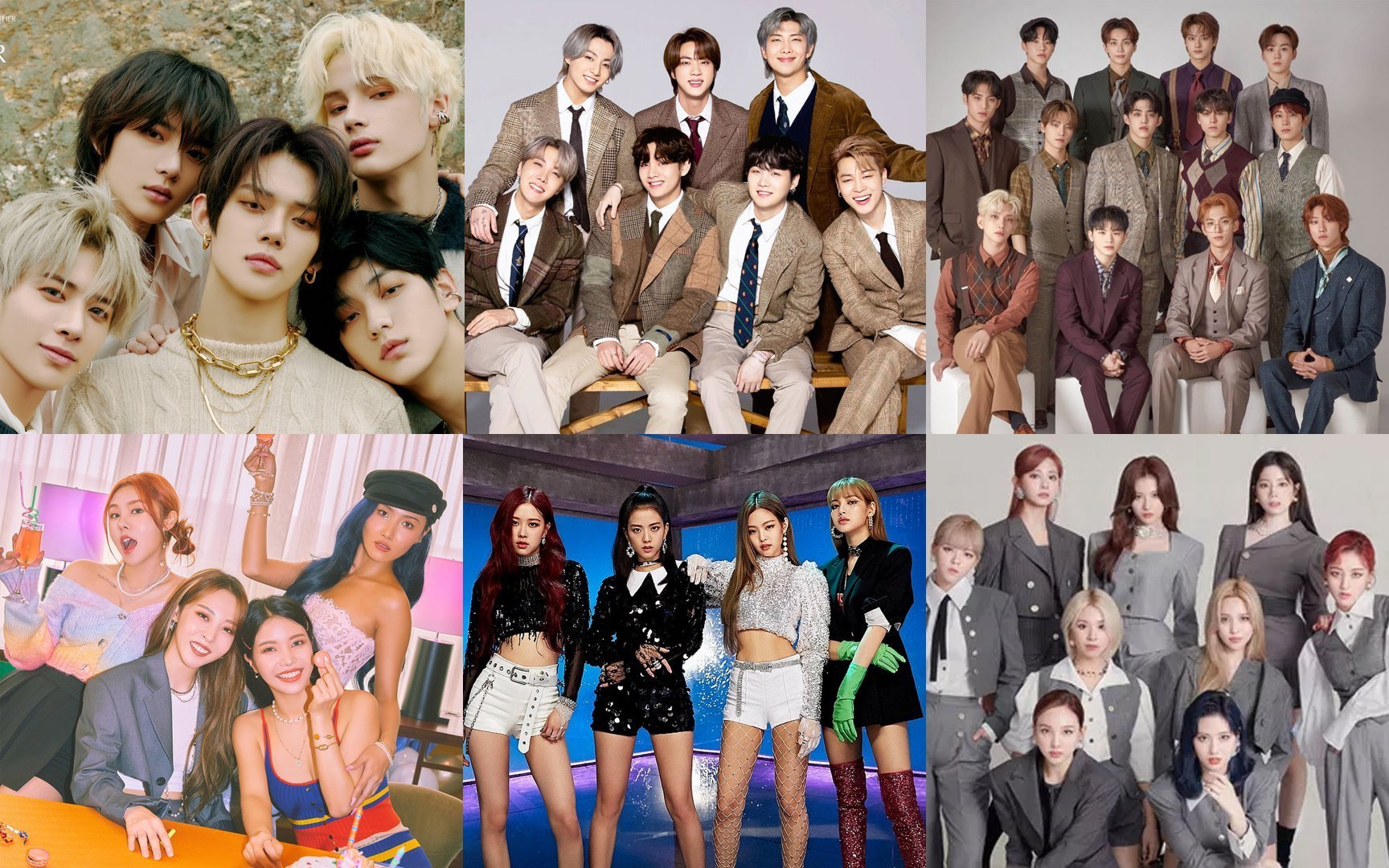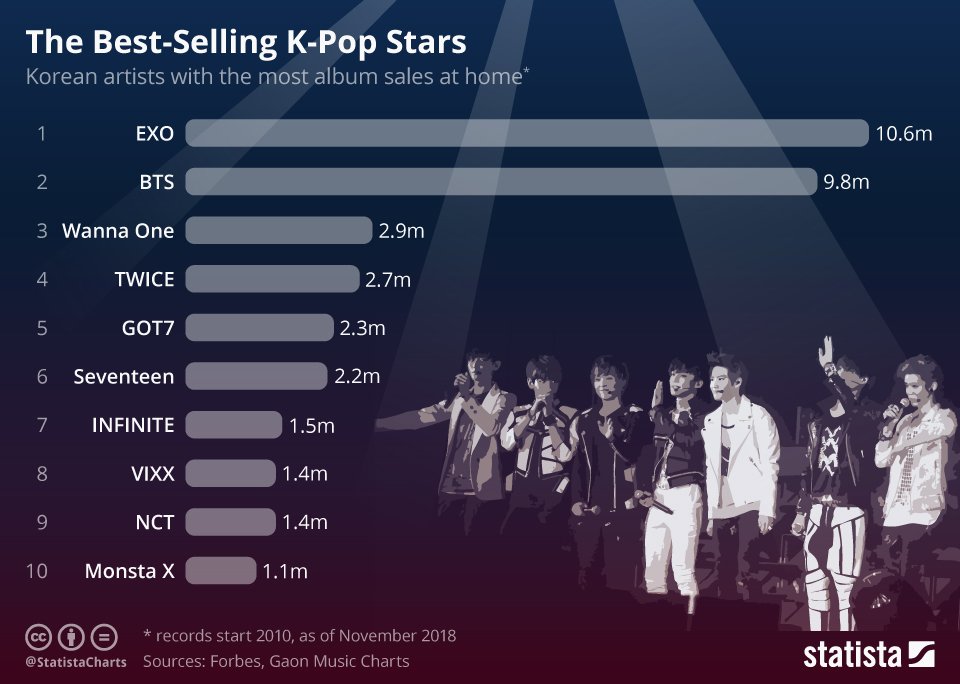The Rise Of K-Pop: How South Korea’s Pop Music Became a Global Phenomenon
If pop music is the soundtrack of our lives, K-Pop is the global anthem of our generation.
Pop music’s global reach has been driven by factors such as changing demographics, growing wealth, and a desire for American culture in developing countries. But, South Korean artists have achieved unprecedented recognition in the last decade to become a cultural force that has transcended borders and languages.
Artists like BTS and BLACKPINK have been selling out stadiums all over the globe and breaking records on streaming platforms. This once-local sensation has become a global phenomenon, thanks to its catchy melodies, polished choreography, and innovative fashion.
Owing to their elaborate music videos, killer choreography, innovative fashion, and devoted fandoms, the K-pop industry generates billions of dollars for South Korea, demonstrating the significant economic impact of cultural globalisation.
But how did K-Pop go from a niche Korean genre to a global sensation seemingly overnight? Let’s chart their incredible journey from beginning to end.
Credit: AllKPop
The K-Pop Evolution: Colonial Roots to Cultural Domination
Korea’s history has had a big impact on its pop culture. Korea was once colonised by Japan and was heavily influenced by the Cold War. This led to a complex cultural evolution. Three key events shaped Korea's cultural identity and led to the rise of K-pop:
The end of Japanese colonisation in 1945
The democratisation of South Korea in the late 1980s
The 1997 IMF crisis leading to the emergence of the “Korean Wave” or Hallyu
After Japan colonised Korea, American music quickly replaced Korean traditional music. The US used its pop culture as part of its Cold War strategy to fight communism and spread American influence. The presence of American troops and the start of American Forces Radio helped American pop music become even more popular in Korea. Korea accepted the idea of “Americanization” because it saw the US as a liberator from Japan and a symbol of modernity.
The 1997 IMF crisis led to a revival of Korean culture, which was supported by the government's “Korean Wave” initiative. As Korea tried to rebuild its economy, it started to promote K-pop aggressively in East and Southeast Asia. The Korean Wave was a chance for Korea to change its identity from being in the shadow of its more powerful neighbours to becoming a cultural superpower. K-pop stars like Rain, BoA, and Se7en became cultural ambassadors, representing a modern way of life that was popular with Asian audiences.
Credit: Sarina Palukuri
The K-Pop Invasion: Local Trend to Global Phenomenon
The democratisation of South Korea led to modernization and a loosening of censorship, which in turn had a profound impact on television. This paved the way for the rise of K-pop, which was further fueled by savvy corporatization, media management, and a steady stream of talented performers.
In 2009, JYP Entertainment tried to break into the mainstream US music market, but they failed. However, K-pop was already starting to become popular in Europe and parts of the US through the internet.
According to pop music critic Kim Do-heon, K-Pop is a perfect fit for social media and that’s the secret of its huge popularity. The key to this is for K-pop to lose some of its “Korean-ness.” Kim told The Korea Herald, “K-pop was fast to adapt to the evolution of digital technology and actively promoted music with a variety of self-produced video content, thereby expanding its fanbase in the global market.”
In 2011, SM Entertainment’s “SM Town World Tour in Paris” became the first K-pop concert in Europe, attracting 14,000 fans over two sold-out days. In 2012, PsY’s “Gangnam Style” became a global phenomenon, setting unprecedented records on global music charts and rankings.
Over the past decade, K-pop has expanded and evolved in new ways. Led by the sensational boy band BTS, K-pop has penetrated the seemingly impenetrable walls of the mainstream American music industry. BTS has made history and paved the way for other K-pop artists to succeed in the US.
In addition to BTS and Blackpink, some of the most popular K-pop bands today include EXO, Wanna One, TWICE, GOT7, Monsta X, INFINITE, Seventeen, VIXX, and NCT. These groups have all achieved global success with their catchy music, energetic performances, and stylish fashion.
The Future of K-Pop: An Emerging Cultural Identity
In recent years, K-pop labels have been holding more and more global auditions, where they look for trainees from all over the world. In addition to its music, the K-pop industry has also been very good at using new technology to make a lot of money. In 2021, K-pop global auditions were held in over 50 countries around the world and the industry generated over $10 billion in revenue in 2021.
Major K-pop labels like SM Entertainment, Hybe, and CJ Entertainment have all announced plans to train and debut new groups in the US this year. Unlike previous multinational groups, which were based in Korea and used Korean as their main language, these new groups will be trained in the US and will debut as global groups.
While the K-pop system is a successful business model, there is still room for improvement. One important issue is whether the K-pop system is open enough to different cultures.
The K-pop industry is also facing increasing competition from other countries, such as China and Japan. These countries are investing heavily in their own pop music industries, and they are producing artists who are just as talented and popular as K-pop idols.
Despite the challenges, the K-pop industry is poised for continued growth in the coming years. The industry is constantly innovating and adapting to new trends. With its focus on global expansion and its use of new technology, the K-pop industry is well-positioned to remain a major force in the global music industry.
Credit: K-Pop Twitter
The K-Pop Revolution: A Powerful Influencer Tool for Brands
South Korean entertainment companies have mastered the art of generating hype and anticipation for their artists’ new content. As K-pop stars are some of the most influential people on social media, brands that collaborate with K-pop stars can reach a global audience of millions of people.
In 2019, BTS partnered with McDonald’s to launch the BTS Meal. The meal was a huge success, with McDonald's reporting a 40% increase in sales in the week after the launch. The BTS Meal was also credited with attracting a younger demographic to McDonald’s.
Here’s how brands can collaborate with K-pop stars to reach a global audience, attract a younger demographic, and boost sales.
Building the Hype
Teaser images and videos: Teaser images and videos are released weeks or even months in advance of a new release, slowly building up excitement and anticipation among fans.
Concept trailers: Concept trailers give fans a glimpse into the overall concept and style of the new release, further piquing their interest.
Social media campaigns: Social media is used to keep fans engaged and updated on the latest news and developments surrounding the new release. This can include exclusive content, contests, and giveaways.
Generating Curiosity
Mysterious storytelling: South Korean entertainment companies often use mysterious storytelling to generate curiosity and speculation among fans. This can be done through cryptic social media posts, teaser images and videos, or even the music itself.
Collaborations: Collaborations with other artists, brands, or even other K-Pop groups can also help to generate curiosity and excitement among fans.
Interactive Content
Fancams: Fancams are videos of K-Pop idols performing on stage, typically filmed by fans. These videos are often shared on social media and can generate millions of views. Brands can partner with K-Pop idols to create sponsored fancams, which can help to promote their products or services to a wide audience.
V-Live: V-Live is a live streaming platform that is popular among K-Pop fans. K-Pop idols use V-Live to communicate with their fans and share behind-the-scenes content. Brands can partner with K-Pop idols to host sponsored live streams, where they can promote their products or services to fans in real time.
Gamification
Mobile games: Many K-Pop groups have their own mobile games, which often feature exclusive content and rewards for fans. Brands can partner with K-Pop groups to create in-game events or challenges that promote their products or services.
AR/VR experiences: Augmented reality (AR) and virtual reality (VR) experiences are becoming increasingly popular in the K-Pop industry. Brands can partner with K-Pop groups to create AR/VR experiences that promote their products or services in a unique and engaging way.
Credit: K-Pop Twitter
Capitalising on the hype, curiosity, and loyalty of K-Pop fans, brands can create successful marketing campaigns that resonate with consumers around the world. K-Pop is emerging as the pulse of the future, not just the heartbeat of popular culture.
For more such in-depth insights, follow Comms8 where we help your brand expand into foreign markets.
At Comms8, we specialise in helping businesses leverage the power of cross-border marketing in Asia. With our expertise, we can assist you in harnessing the influence of marketing strategies to boost your brand's credibility and awareness. Contact us today to learn more about empowering your brand in the dynamic Asian market.





